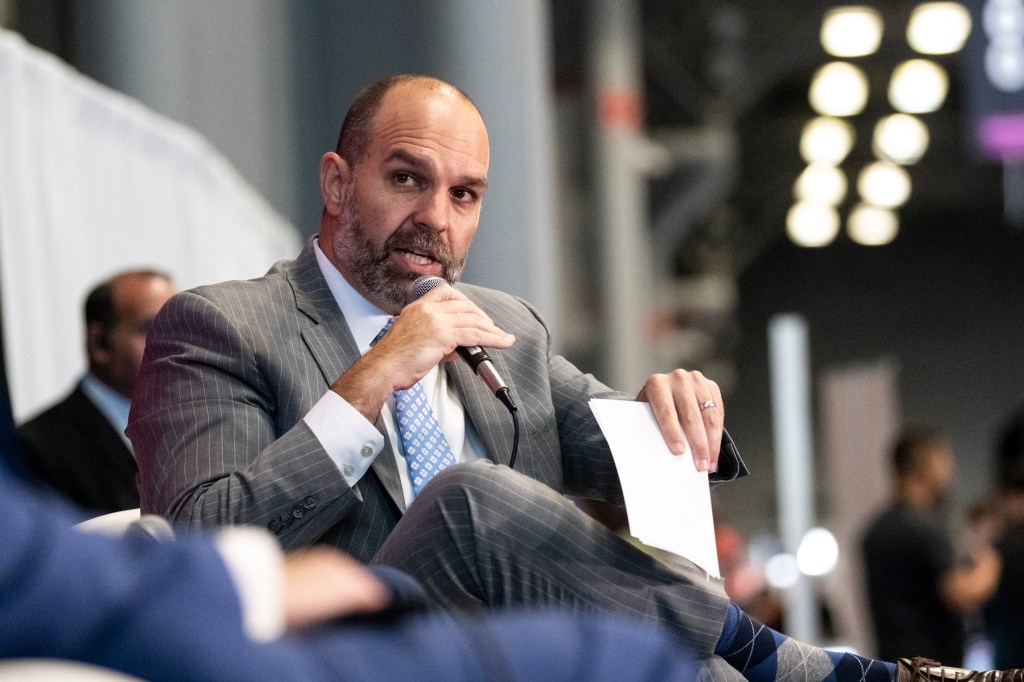Listen to the article
Broadcasting Industry Faces Trust Issues in Era of AI and Misinformation
The National Association of Broadcasters (NAB) Show in New York last week shifted focus from its traditional technology showcase to spotlight a critical challenge facing the industry: rebuilding public trust amid the rise of artificial intelligence and widespread misinformation.
The lobbying group made this shift intentional, organizing high-profile discussions where broadcast executives, digital media leaders, union representatives, and journalists debated the industry’s future. The timing proved significant, coming shortly after ABC’s suspension of Jimmy Kimmel, which raised First Amendment concerns among top station executives.
NAB CEO Curtis LeGeyt moderated a key panel titled “The Future of News: AI, New Revenues and Risks and the Policy Response,” noting that approximately 70% of newsrooms have already implemented AI technology. This rapid adoption has raised “serious concerns about copyright, consent, compensation and the credibility of the information being delivered,” LeGeyt said.
New survey data presented by campaign strategy firm OnMessage revealed remarkable bipartisan agreement on AI concerns. The mid-September poll of 1,000 likely voters found 82% were “concerned” or “very concerned” about AI’s development. Even more striking for broadcasters, 76% of respondents expressed concern about “AI stealing or reproducing journalism and local news stories published online.”
Tommy Binion, OnMessage VP, characterized these numbers as “sky-high” and “great news” for regulators seeking public support to impose restrictions on AI companies. The poll also revealed 68% of respondents mistrust AI-generated news, while 77% would support Congressional legislation restricting it.
Nick Radziul, EVP of Hearst Television, expressed surprise at the depth of public mistrust toward AI. “It highlights the challenge of how to implement AI” at his company’s stations, he said. Despite these concerns, broadcasters acknowledge AI offers valuable efficiencies in editing, advertising, and other operational areas that don’t directly impact news gathering.
Jon Schleuss, President of NewsGuild-CWA, warned that AI adoption could undermine the trust journalists build “brick by brick” with their audiences, particularly given the “garbage” proliferating online. LeGeyt agreed, noting, “There’s a real tension here. The poll data surpassed my wildest expectations. And we’re in the trust business.”
Brad Silver, VP and Global Head of Public Policy, AI, and IP for Condé Nast parent Advance, emphasized the need for appropriate compensation when AI systems scrape news content. “Licensing and dealmaking is possible, but we need incentives for AI companies to participate,” Silver said, highlighting the ongoing tensions between publishers and tech platforms.
Radziul pointed out that “leverage is in favor of the Big Tech companies,” calling them “anti-competitive gatekeepers for news content.” Both he and LeGeyt called for congressional intervention, with Radziul warning, “If Congress doesn’t step in, I’m not sure there is another solution that comes in time to, frankly, save local news producers.”
A separate panel explored broader trust issues in journalism, revealing stark partisan divides. New York Times assistant managing editor Patrick Healy moderated the discussion with CNN’s Brian Stelter, Axios’ Sara Fischer, and Status co-founder Oliver Darcy.
Darcy criticized large news organizations for attempting to appease conservative audiences who have been “trained to hate them.” He cited Paramount (CBS News), the Los Angeles Times, and potentially the Washington Post as examples of media companies trying to soften coverage to win over Republican viewers. “What actually happens is you lose trust among people who rely on the New York Times,” Darcy argued.
Healy acknowledged the Times faces criticism from both sides of the political spectrum. He also contrasted the current White House’s relationship with journalists to the Biden administration, noting that reporting on Biden’s age and cognitive abilities “came in for a hell of fire” with “enormous pressure from Biden and the Democratic Party.”
As political polarization intensifies and AI technology continues advancing, the broadcast industry finds itself at a critical juncture. The consensus from the NAB panels suggests that maintaining journalistic integrity while adapting to technological change will be essential for preserving public trust—and potentially the future of the industry itself.
Verify This Yourself
Use these professional tools to fact-check and investigate claims independently
Reverse Image Search
Check if this image has been used elsewhere or in different contexts
Ask Our AI About This Claim
Get instant answers with web-powered AI analysis
Related Fact-Checks
See what other fact-checkers have said about similar claims
Want More Verification Tools?
Access our full suite of professional disinformation monitoring and investigation tools



